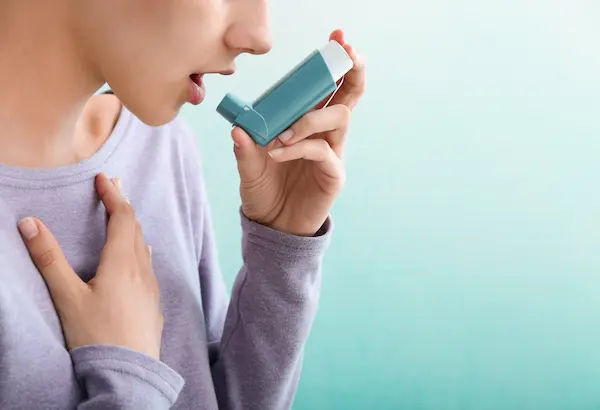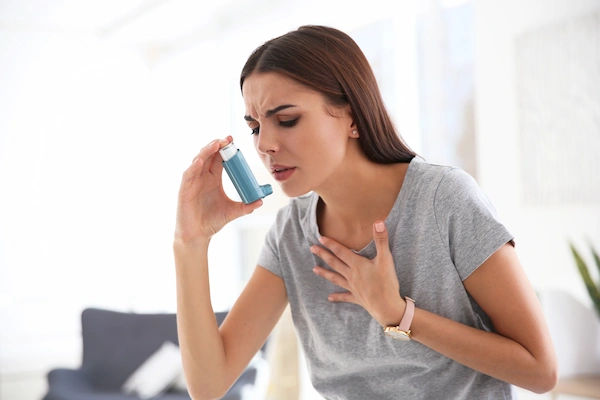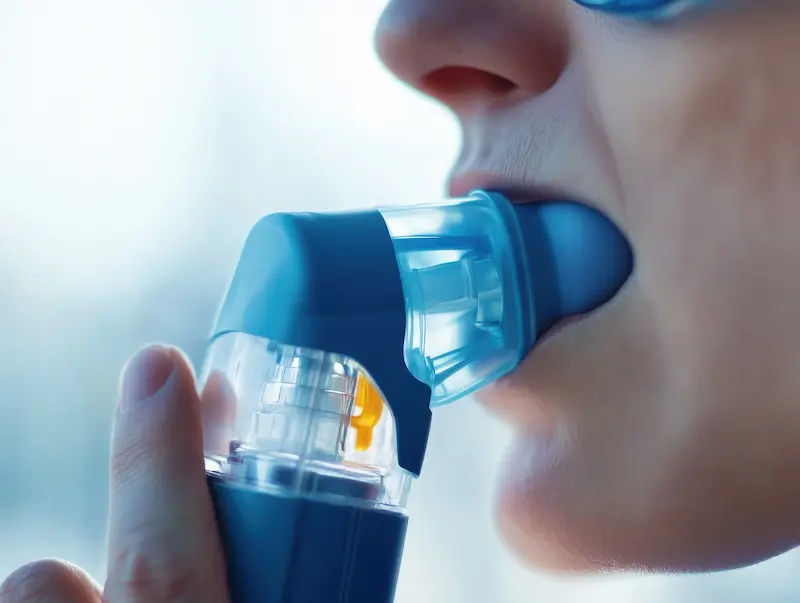Master Your Inhaler Essential Techniques & Pro Tricks
Learn the correct way to use inhalers with essential techniques, common mistakes to avoid, and expert tips for better asthma and COPD control.


Introduction
Do you ever feel like your inhaler just isn't working as well as it should? You're not alone. Studies show that a staggering majority of people—up to 90%—use their inhalers incorrectly. This means missing out on vital medication, leading to poor asthma or COPD control, more frequent attacks, and unnecessary trips to the doctor. Getting the technique right is the single most important thing you can do to manage your respiratory health. This definitive guide goes beyond the basics to unpack the essential techniques and little-known tricks for inhalers. We’ll cover every major type, reveal the most common mistakes, and provide pro tips to ensure you get every full, effective dose you need to breathe easily.
Why Proper Inhaler Technique is a Game-Changer
The Shocking Statistics of Incorrect Use
The data doesn't lie. Research published in the Journal of Allergy and Clinical Immunology indicates that incorrect inhaler technique is a global problem, with error rates ranging from 70% to 90%. This isn't a minor issue; it's a public health concern. Whether it's not shaking the canister, inhaling too quickly, or failing to hold your breath, each mistake significantly reduces the amount of medicine that reaches your lungs.
How Mistakes Impact Your Health
When medication doesn't reach its intended target—your lungs' airways—it remains in your mouth and throat or is exhaled back out. This leads to:
• Reduced Efficacy: Your symptoms (wheezing, shortness of breath, coughing) aren't fully relieved.
• Increased Side Effects: For steroid inhalers, medication deposited in the mouth can lead to oral thrush or a hoarse voice.
• More Frequent Flare-Ups: Poor control means you're more vulnerable to triggers, leading to worse attacks and potentially emergency room visits.
• Wasted Medication: You're essentially paying for medicine you aren't fully benefiting from.
Your Inhaler Technique Toolkit: A Type-by-Type Guide
Using the correct dry powder inhaler technique steps is non-negotiable for its effectiveness. The most critical difference to remember is that DPIs require your own breath power to pull the medicine out of the device and into your lungs.
Dry Powder Inhalers (DPIs): The Breath-Actuated Option
The Key to DPIs: A Fast, Deep, and Forceful Breath
1. Load the Dose: Follow the specific priming instructions for your device (e.g., twist the base, slide a lever, insert a capsule).
2. Exhale Gently: Breathe out fully, away from the mouthpiece. Do not exhale into the inhaler, as moisture can clog the powder.
3. Seal Your Lips: Place the mouthpiece firmly between your teeth and close your lips tightly around it.
4. Inhale Rapidly & Deeply: This is the crucial step. In one motion, take a fast, deep, and forceful breath in through your mouth. You should hear a rattling or feel a taste.
5. Hold and Exhale: Remove the inhaler from your mouth. Hold your breath for 5–10 seconds if you can, then breathe out slowly.
Common DPI Brands and Their Quirks
• Turbuhaler: Requires a specific twisting motion to load. It has a dose counter.
• Diskus/Accuhaler: A lever is slid to prime the dose. The dose counter is easy to read.
• Ellipta: Slide the cover down until it clicks to prime; it's pre-loaded with 30 doses.
Consult a Pulmonologist for Personalised Advice
Top 7 Inhaler Mistakes and How to Fix Them
1. Not Breathing Out First: Always exhale fully before placing the inhaler in your mouth to make room for a deep, medicine-carrying breath.
2. Inhaling Too Fast or Too Slow: For MDIs, a slow, steady breath is key. For DPIs, it must be fast and forceful. Match your breath to your device.
3. Failing to Hold Your Breath: Holding for 5–10 seconds allows the medication to settle in your airways. Count silently to 10.
4. Not Using a Spacer with an MDI: Spacers act as a holding chamber, eliminating the need for perfect coordination and ensuring more medicine reaches the lungs. They are highly recommended for everyone, especially children and older adults.
5. Incorrect Head Position: Keep your head in a neutral position, not tilted too far back or forward.
6. Not Shaking the MDI: Shaking the canister for 5 seconds mixes the propellant and medication for a consistent dose.
7. Forgetting to Rinse (for Steroid Inhalers): Always rinse your mouth with water and spit it out after using a corticosteroid inhaler to prevent oral thrush.
Pro Tricks for Real-Life Situations
How to Tell if Your Inhaler is Empty (Without Shaking It)
Shaking an MDI is not a reliable way to check. Instead, use the dose counter. If your inhaler doesn't have one, place the canister in a bowl of water. If it floats horizontally, it's empty. If it sinks or floats vertically, it still has medication. Note: This is a last-resort trick and not endorsed by all manufacturers. The best practice is to track your doses or use a counter.
The "No-Water" Trick for Using Your Inhaler in a Pinch
Forgot to rinse after your steroid preventer inhaler? Chew sugar-free gum or eat a piece of food (like an apple) to help clear the medication from your mouth and throat until you can properly rinse.
Coordinating Breath and Press: A Simple Timing Drill
Struggling with MDI coordination? Practice without medication. First, exhale. Then, as you start to inhale slowly, press the canister down. Continue to inhale slowly for 3–5 seconds. This "start breathing, then press" drill can retrain your muscle memory.
Maintenance 101: Keeping Your Inhaler Clean and Effective
A clean inhaler delivers a clean dose. For MDIs: Remove the metal canister and rinse the plastic case (mouthpiece and cap) under warm running water once a week. Let it air-dry completely before reassembling. For DPIs: Never wash them. Wipe the mouthpiece with a dry cloth to remove powder residue. Regularly check the expiry date.
When to Seek Professional Help
Even with perfect technique, your needs may change. If your condition does not improve after consistently using these methods, book a physical visit to a doctor with Apollo24|7. You should also consult a professional:
• If you experience increased wheezing, tightness, or shortness of breath after using your inhaler.
• To have your technique checked annually. You can even consult a doctor online with Apollo24|7 for a quick technique check-up via video call.
• If you lose your voice frequently or see white spots in your mouth (signs of thrush).
Conclusion
Mastering your inhaler isn't about complex medical knowledge; it's about understanding the simple mechanics of your specific device and practising the right techniques. From the fundamental steps of using a Metered-Dose Inhaler to the powerful breath required for a Dry Powder Inhaler, consistency is key. By avoiding common pitfalls, employing clever tricks for daily life, and maintaining your device, you take control of your therapy. This ensures the life-changing medication you rely on actually reaches your lungs, giving you the freedom to breathe easier and live fully. Don't let poor technique hold you back—revisit this guide, practise in front of a mirror, and take charge of your respiratory health today.
Consult a Pulmonologist for Personalised Advice
Consult a Pulmonologist for Personalised Advice

Dr. P Sravani
Pulmonology Respiratory Medicine Specialist
3 Years • MBBS, MD
Visakhapatnam
Apollo Clinic Vizag, Visakhapatnam

Dr. K Prasanna Kumar Reddy
Pulmonology Respiratory Medicine Specialist
16 Years • MBBS, DTCD (TB&CHEST), DNB (PULM MED), FCCP
Hyderabad
Apollo Medical Centre Kondapur, Hyderabad

Dr. E Prabhakar Sastry
General Physician/ Internal Medicine Specialist
40 Years • MD(Internal Medicine)
Manikonda Jagir
Apollo Clinic, Manikonda, Manikonda Jagir
(150+ Patients)

Dr. Gomathi R G
Respiratory Medicine/ Covid Consult
7 Years • MBBS, MD (TB & Pul. Med.)
Chennai
Apollo First Med Hospitals P H Road, Chennai
Dr. Lokesh Kumar Garg
Pulmonology Respiratory Medicine Specialist
15 Years • MBBS,DTCD,PGDS
Faridabad
Arsh Hospital, Faridabad
Consult a Pulmonologist for Personalised Advice

Dr. P Sravani
Pulmonology Respiratory Medicine Specialist
3 Years • MBBS, MD
Visakhapatnam
Apollo Clinic Vizag, Visakhapatnam

Dr. K Prasanna Kumar Reddy
Pulmonology Respiratory Medicine Specialist
16 Years • MBBS, DTCD (TB&CHEST), DNB (PULM MED), FCCP
Hyderabad
Apollo Medical Centre Kondapur, Hyderabad

Dr. E Prabhakar Sastry
General Physician/ Internal Medicine Specialist
40 Years • MD(Internal Medicine)
Manikonda Jagir
Apollo Clinic, Manikonda, Manikonda Jagir
(150+ Patients)

Dr. Gomathi R G
Respiratory Medicine/ Covid Consult
7 Years • MBBS, MD (TB & Pul. Med.)
Chennai
Apollo First Med Hospitals P H Road, Chennai
Dr. Lokesh Kumar Garg
Pulmonology Respiratory Medicine Specialist
15 Years • MBBS,DTCD,PGDS
Faridabad
Arsh Hospital, Faridabad
More articles from Asthma
Frequently Asked Questions
1. How often should I have my inhaler technique checked?
It's recommended to have a healthcare professional, like a doctor or pharmacist, check your technique at least once a year. Skills can get rusty over time, and a quick review can make a big difference in your symptom control.
2. What should I do if my inhaler isn't relieving my asthma attack?
If you are having a severe asthma attack and your rescue inhaler (usually a blue one) is not working, this is a medical emergency. Seek immediate medical attention. Do not keep repeatedly using the inhaler beyond the recommended doses.
3. Can I use someone else's inhaler if I'm having trouble breathing?
No, you should never use someone else's prescribed inhaler. Inhalers contain specific medications and doses tailored to an individual's needs. Using the wrong one could be ineffective or even harmful. Always use your own prescribed medication.
4. Why does my inhaler taste funny or make me cough?
A strange taste or a momentary cough is common, especially with steroid inhalers. It often means the medication is hitting the back of your throat. Ensuring a proper, deep inhalation technique and using a spacer with an MDI can help minimise this. However, if coughing is severe or persistent, consult your doctor.
5. How do I know when it's time for a new inhaler?
The most reliable way is by using the built-in dose counter. Never rely on shaking the canister to guess. Keep track of your usage and replace the inhaler when the counter reaches zero. For inhalers without counters, track the number of doses you've used on a calendar.




